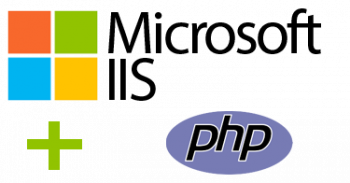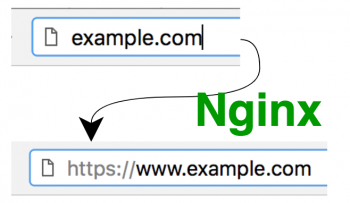Install Blender on Ubuntu 20.04 - Step by Step Process ?
This article covers steps to install Blender on Ubuntu Systems. Blender 3D is a professional open-source 3D graphics and animation software. It has a rich feature set like animations, visual effects, 3D modeling, and motion graphics.
It produces great results and is used in professional film production.
To install Blender 3D on Ubuntu:
1. We need to update our Ubuntu 20.04 system before installing Blender 3D on it. This can be done with the following command:
$ sudo apt-get update2. Now, we can install Blender 3D on our Ubuntu 20.04 system with the following command:
$ sudo apt install blenderDuring the installation of this software, you will be asked to provide confirmation for this action by typing in "y" and then pressing the Enter key.
Install Ansible on Ubuntu 20.04 LTS - Step by Step Process ?
This article covers how to install and configure Ansible on Ubuntu 20.04. Ansible is a widely used automation tool in DevOps and used by thousands of developers and sysadmins to configure and deploy applications on servers.
It saves time and minimizes the effort required to handle a multitude of servers in a complex IT infrastructure.
To install Ansible on Ubuntu:
1. First, refresh your system’s package index with:
# sudo apt update2. Following this update, you can install the Ansible software with:
$ sudo apt install ansiblePress Y when prompted to confirm installation.
To check if Ansible is able to connect to these servers and run commands via SSH:
From your local machine or Ansible control node, run:
$ ansible all -m ping -u rootThis command will use Ansible's built-in ping module to run a connectivity test on all nodes from your default inventory, connecting as root.
The ping module will test:
i. if hosts are accessible;
ii. if you have valid SSH credentials;
iii. if hosts are able to run Ansible modules using Python.
Install Mono on CentOS 8 - Step by Step Process ?
This article covers how to install and use Mono on CentOS 8 system. Mono is a platform for developing and running cross-platform applications based on the ECMA/ISO Standards.
It is a free and open-source implementation of Microsoft’s .NET framework.
To Verify the installation by running the following command that prints the Mono version:
$ mono --version
Install and Configure Fail2ban on Red Hat Enterprise Linux 8 - Step by Step Process ?
This article covers the installation of Fail2ban and the configuration of an sshd filter. There are so many options to configure but we focused on the basic ones. Feel free to peruse the Fail2ban man pages by running man fail2ban to discover what more you can do with it.
Fail2ban is a free, open-source and widely used intrusion prevention tool that scans log files for IP addresses that show malicious signs such as too many password failures, and much more, and it bans them (updates firewall rules to reject the IP addresses).
By default, it ships with filters for various services including sshd.
To install and configure Fail2ban on CentOS/RHEL 8:
1. After logging into your system, access a command-line interface, then enable the EPEL repository on your system:
# dnf install epel-releaseOR
# dnf install https://dl.fedoraproject.org/pub/epel/epel-release-latest-8.noarch.rpm2. Afterward, install the Fail2ban package by running the following command:
# dnf install fail2ban3. To start and enable the fail2ban service for now and check if it is up and running using the following systemctl command:
# systemctl start fail2ban
# systemctl enable fail2ban
# systemctl status fail2ban
Manage Disk Volumes in RHEL / CentOS Linux - Step by Step Process ?
This article covers how to Manage Disk Volumes in Linux. Disk drives management is one of the most repeated and important tasks for every System Administrator which is considered one of the critical activities. Also, you will be able to increase the disk on your system.
Linux needs at least one partition, namely for its root file system and we can't install Linux OS without partitions.
Once created, a partition must be formatted with an appropriate file system before files can be written to it.
Facts about fdisk Command?
1. fdisk stands for fixed disk or format disk is a cli utility that allow users to perform following actions on disks.
2. It allows us to view, create, resize, delete, move and copy the partitions.
3. It understands MBR, Sun, SGI and BSD partition tables and it doesn't understand GUID Partition Table (GPT) and it is not designed for large partitions.
4. fdisk allows us to create a maximum of four primary partitions per disk.
5. One of these may be an extended partition and it holds multiple logical partitions.
Install LAMP Stack on Red Hat Enterprise Linux 8 - Step by Step Process ?
This article covers the installation of the LAMP stack (i.e., Linux, Apache, MariaDB, and PHP) on RHEL 8.
LAMP stands for Linux, Apache, MariaDB/MySQL and PHP, all of which are open source.
With the yum commands below, install LAMP stack:
# Will automatically update
$ sudo yum -y update# Will automatically install Apache/HTTPD
$ sudo yum -y install httpdTo Install MariaDB Database Server on CentOS 8/RHEL 8:
1. Enter the following command to install MariaDB on CentOS 8/RHEL 8.
# dnf install mariadb-server mariadb -y2. After it's installed, we need to start it.
# systemctl start mariadb3. Enable auto start at system boot time.
# systemctl enable mariadb4. Check status:
# systemctl status mariadb















